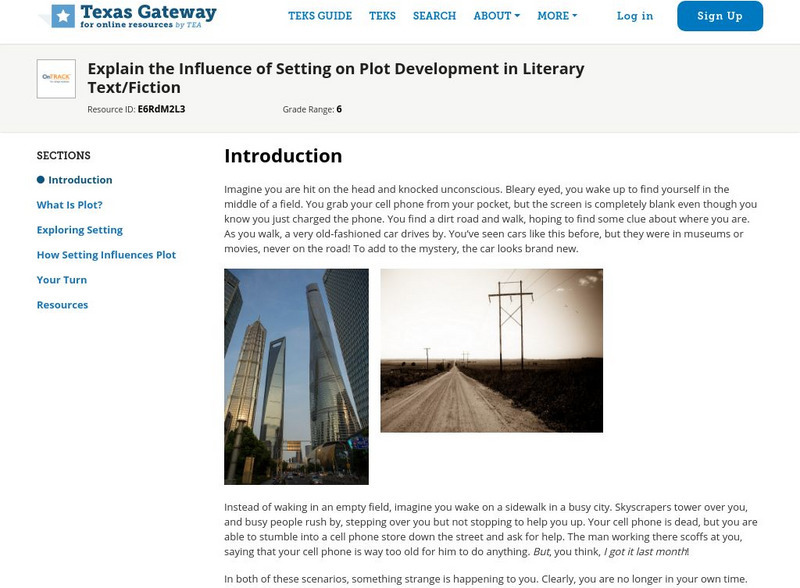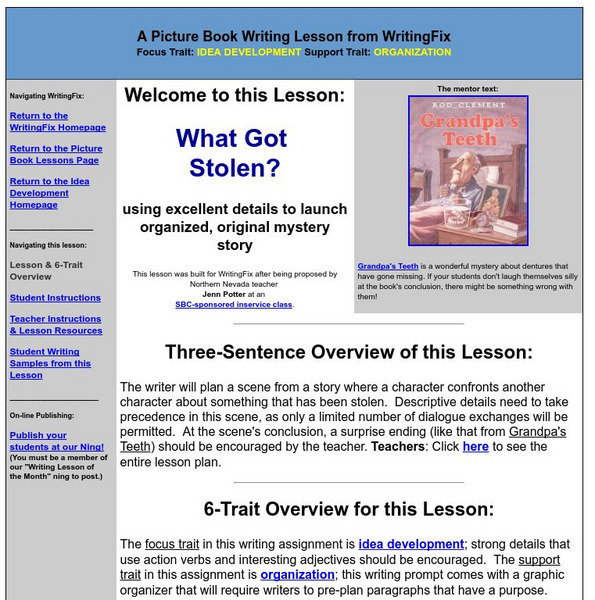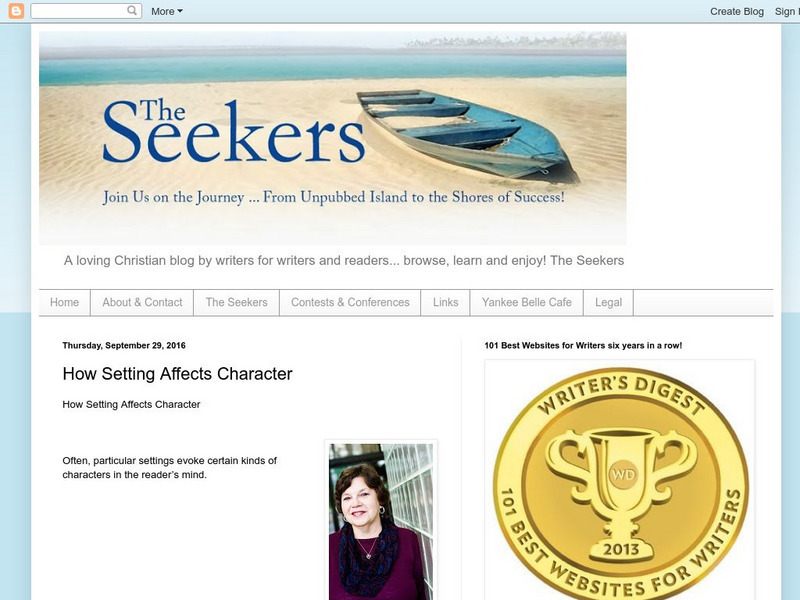Hi, what do you want to do?
Texas Education Agency
Texas Gateway: Explain Influence of Setting on Plot Development in Literary Text
In this lesson, students will review two elements of fiction, setting and plot, and learn how the setting influences the plot in stories.
Texas Education Agency
Texas Gateway:writing an Engaging Story With Literary Strategies to Enhance Plot
A learning module that teaches students about writing a short story with a strong plot in seven mini-lessons: Introduction, Choose the Point of View, Figure Out What to Say, Suspend Readers in Midair, Write about a Central Theme, Read A...
Texas Education Agency
Texas Gateway: Analyze Development of Plot Through Characters in Literary Text
[Accessible by TX Educators. Free Registration/Login Required] Often characters are a driving force behind the plot. In this lesson, students will learn how complex, multilayered characters contribute to the development of a story's plot...
Tom Richey
Slide Share: Elements of Plot
A slide show with ten slides about the parts of a plot development: exposition, conflict, rising action, climax, falling action, and resolution.
Texas Education Agency
Texas Gateway: Writing a Short Story With Well Developed Conflict and Resolution
A learning module that teaches students about writing a short story in six mini-lessons: Introduction, Understanding the Essence, Getting an Idea, Structuring Plot, Building Conflict, and Outlining Your Own Story.
Caro Clarke
Caro Clarke: Pacing Anxiety, or How to Stop Padding and Plot!
This is the seventh installment of a series giving advice to the author who is new to writing novels. This article focuses on how to take your characters and use them and their conflicts to develop the plot of your story. W.9-10.3b...
Writing Fix
Writing Fix: What Got Stolen?
After reading Grandpa's Teeth by Rod Clement, the writer will plan a scene from a story where a character confronts another character about something that has been stolen. Descriptive details need to take precedence in this scene, as...
Caro Clarke
Historical Fiction: Who Rules?
This is the fifteenth article in a series designed to help the new novel author. This article focuses on the genre of historical fiction and the role of the author. Is the author a researcher or a story-teller?
ReadWriteThink
Read Write Think: Narrative Pyramid
A printable narrative pyramid where students can record information about a story including the character, setting, problem, main events, and solution. Directions on how to use this type of graphic organize as well as lists of teaching...
Other
Seekers Blog Spot: How Setting Affects Characters
Information and examples of different ways the setting of a text can affect the characters and character development. (Published: Sept. 29, 2016)
Caro Clarke
Not Stopping the Reader: How to Avoid Stumbling Blocks
This is the eighth article in a series that focuses on helping the new novel author. This article looks at how the author can avoid creating stumbling blocks that disrupt the flow of the novel.
Caro Clarke
Explaining Too Much: Why More Is Less
This is the eleventh article in a series that is designed to help the new novel author. This article focuses on how to eliminate needless information in your novel. The key is to not explain too much about the action.
















